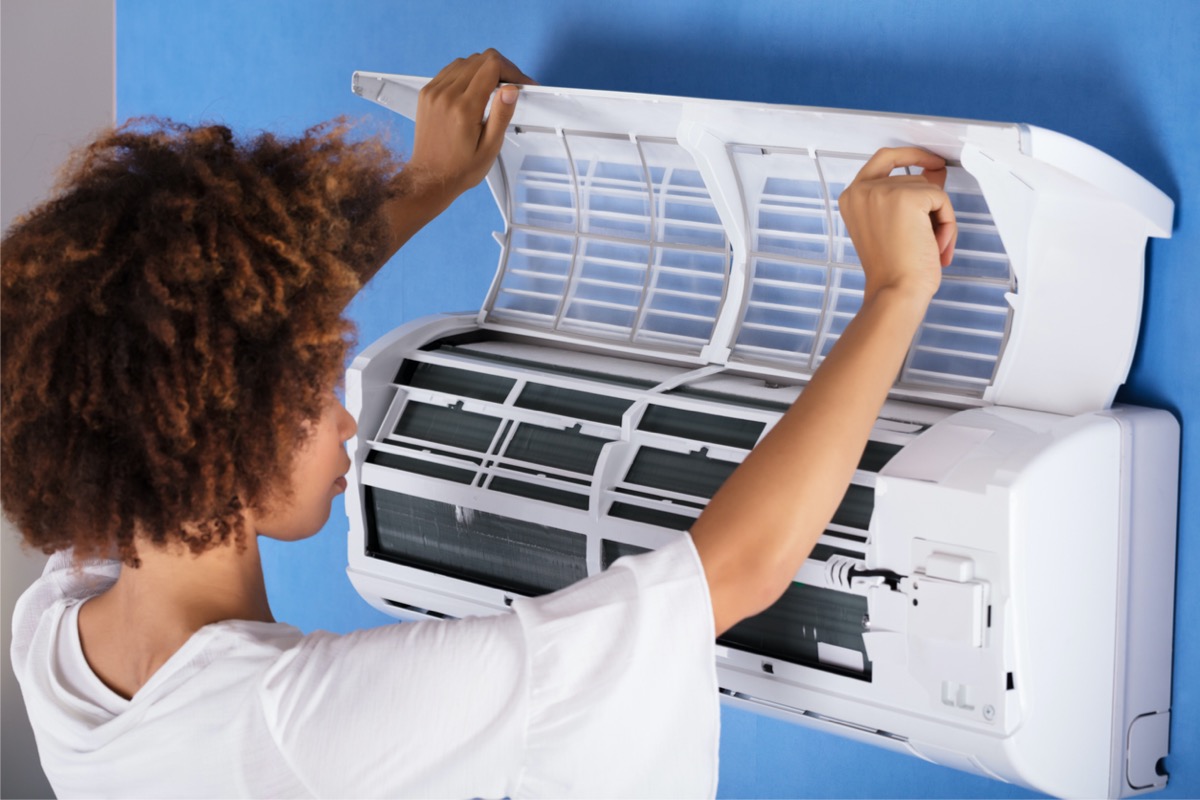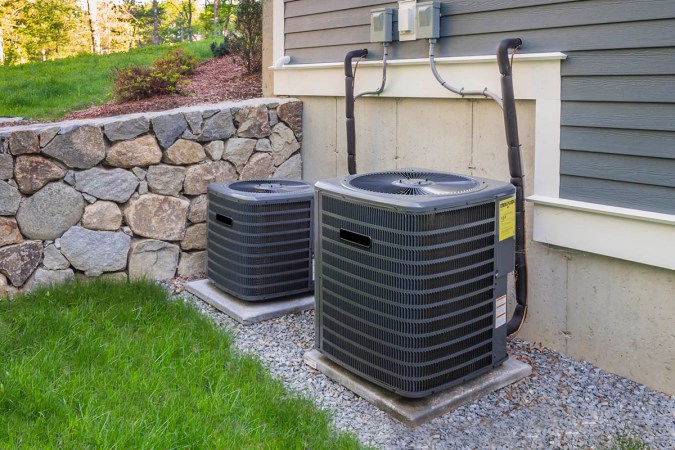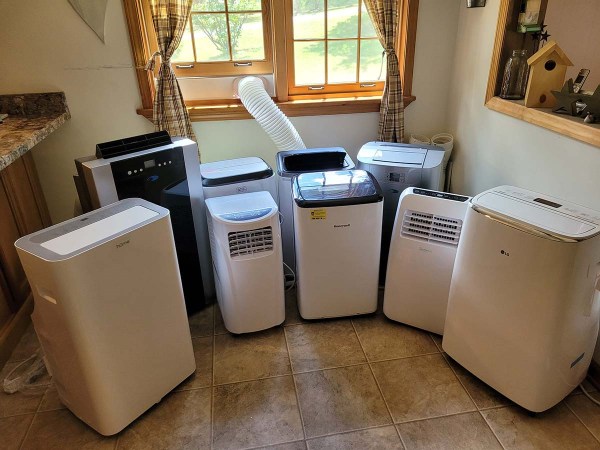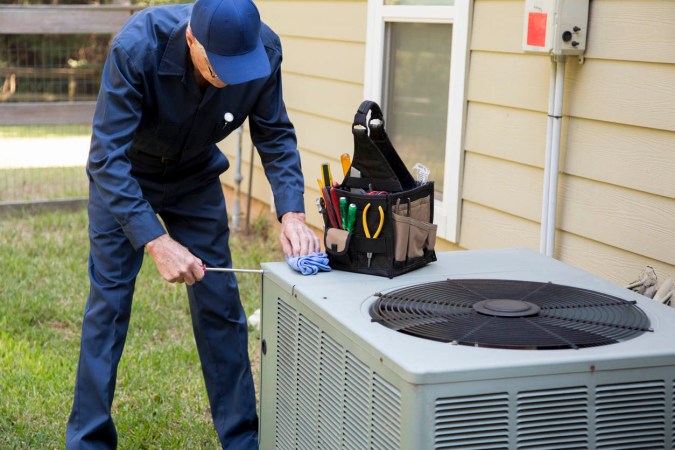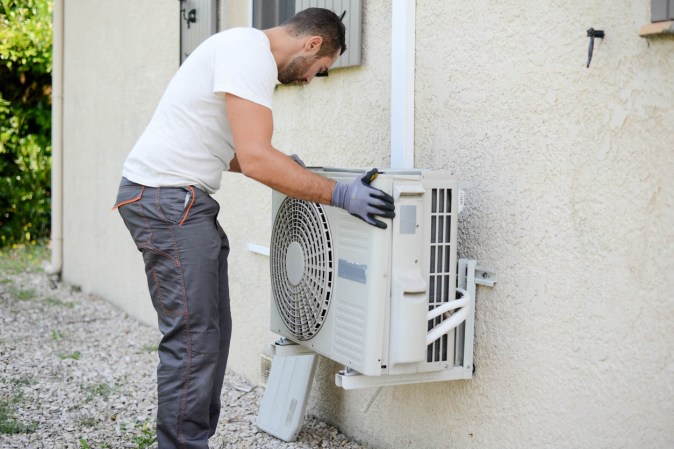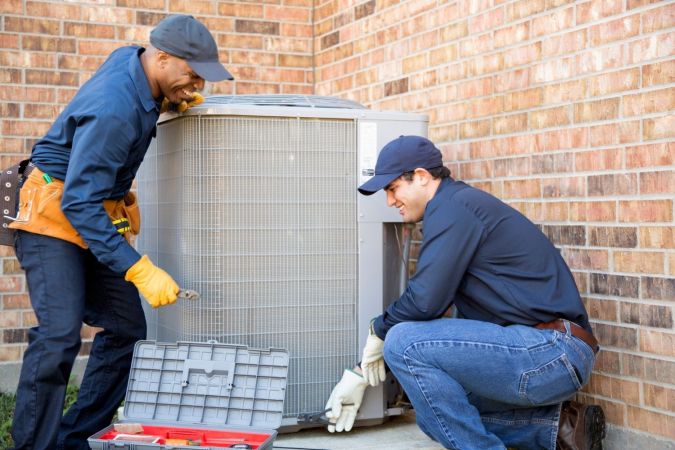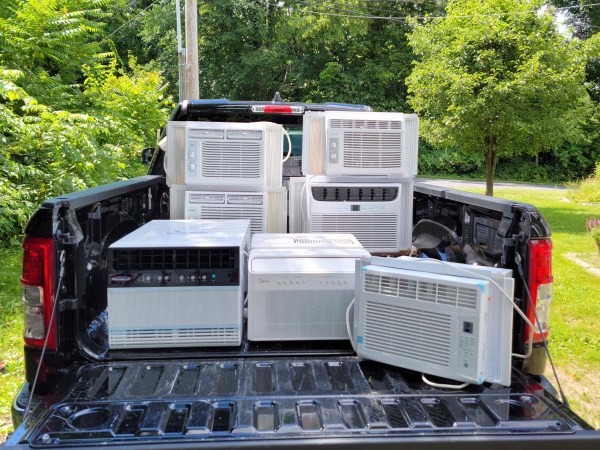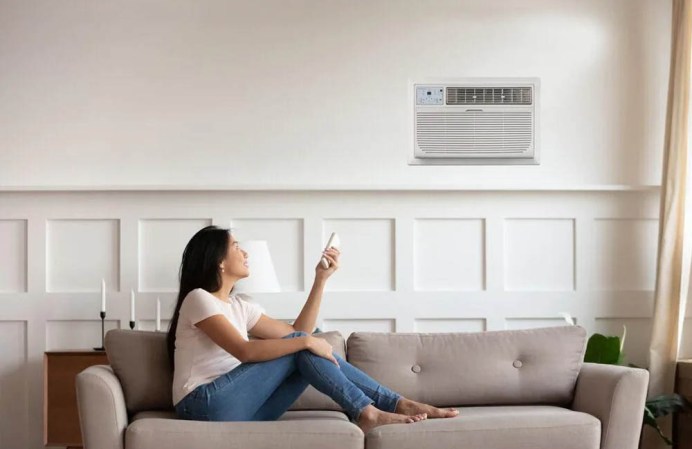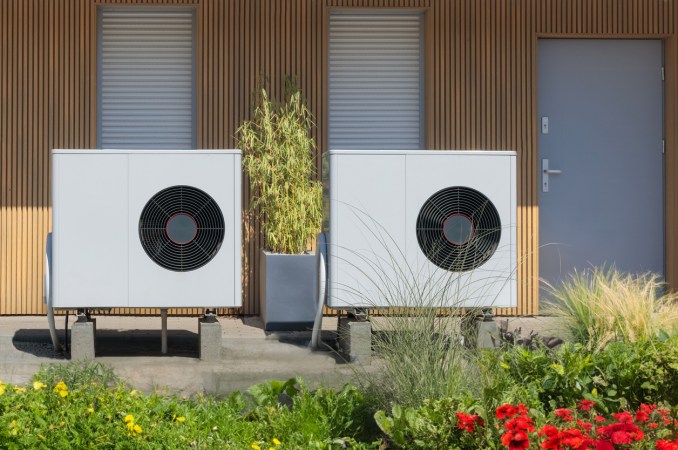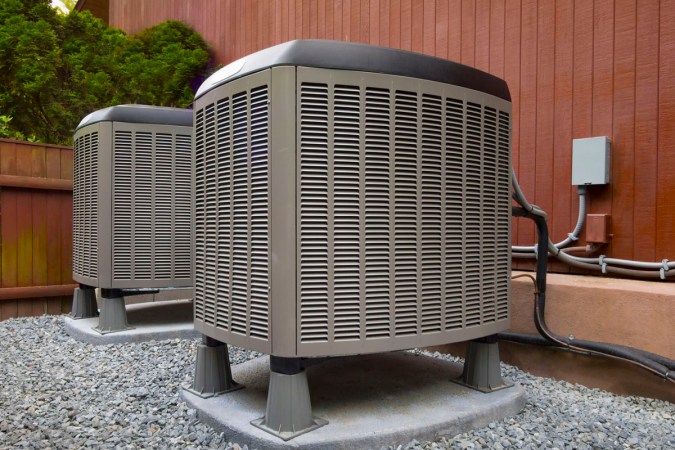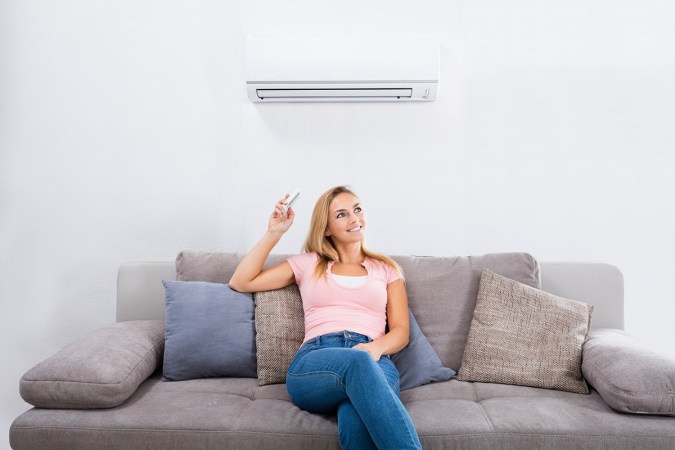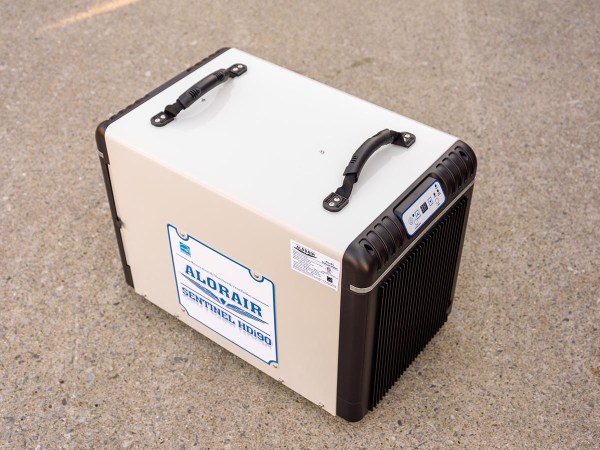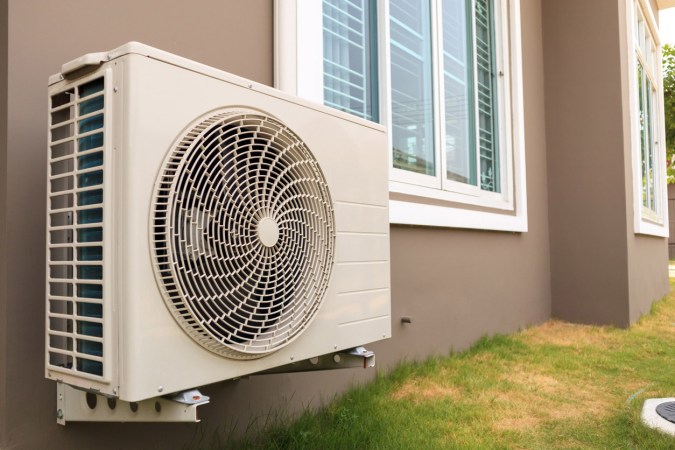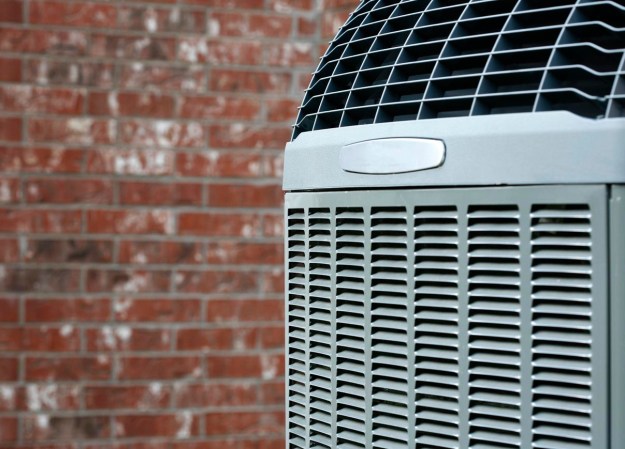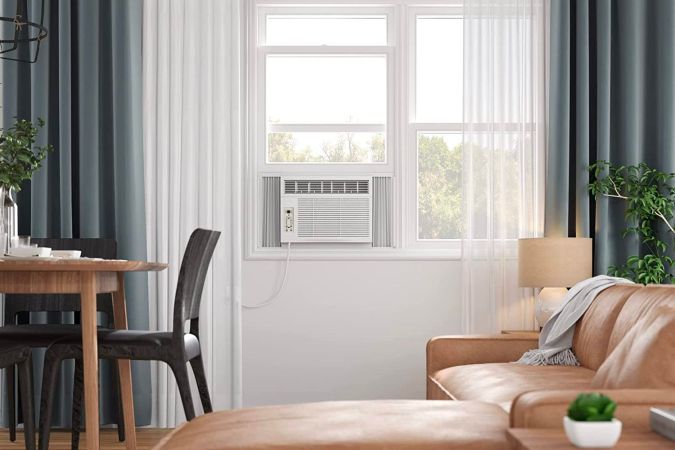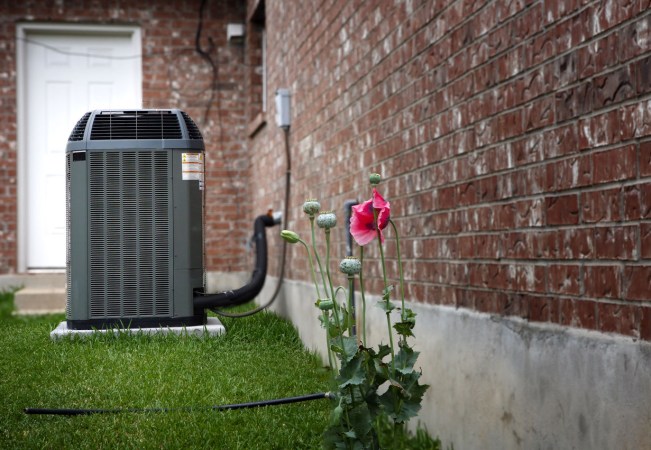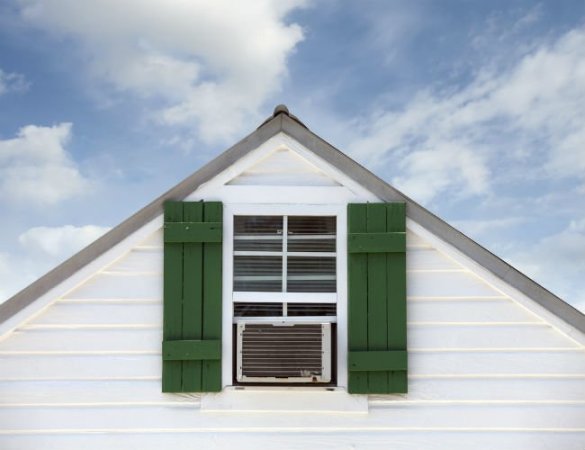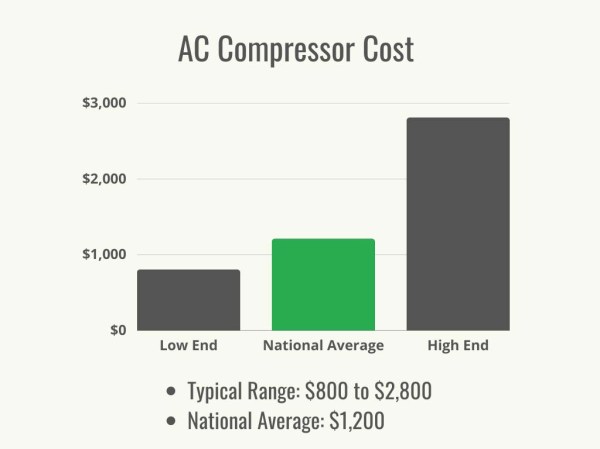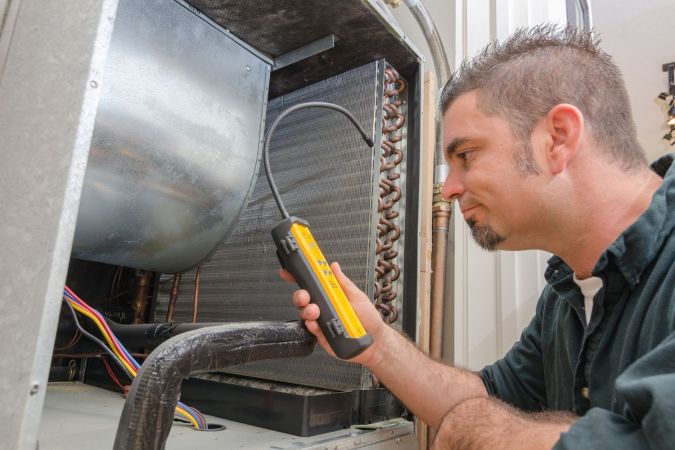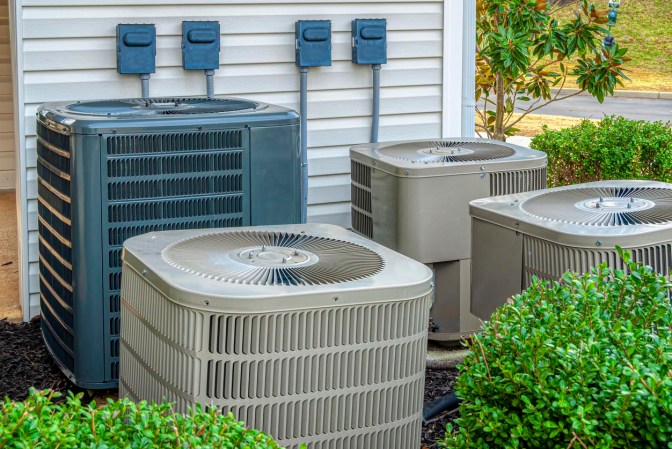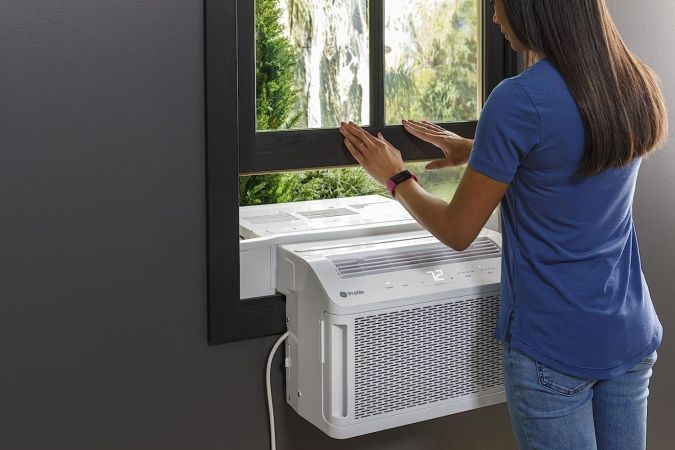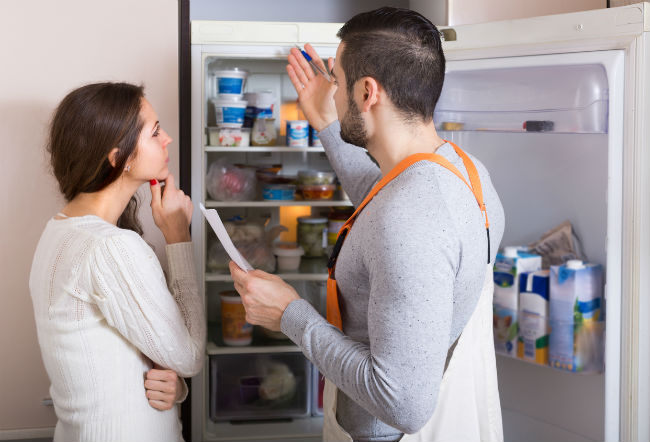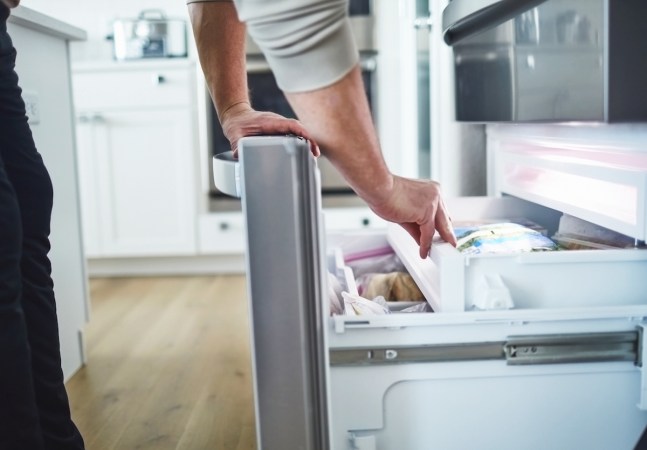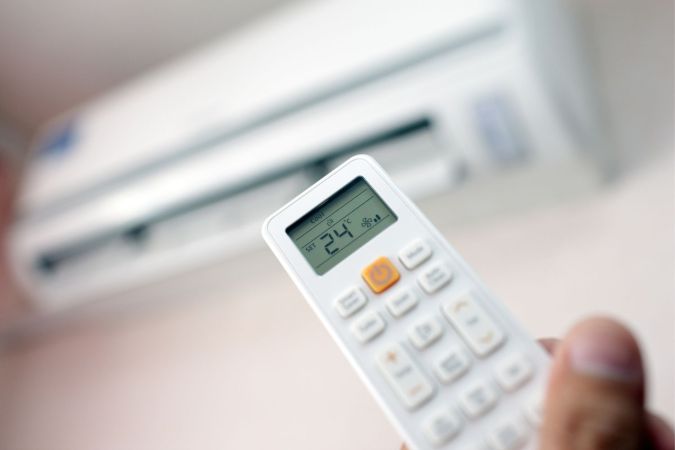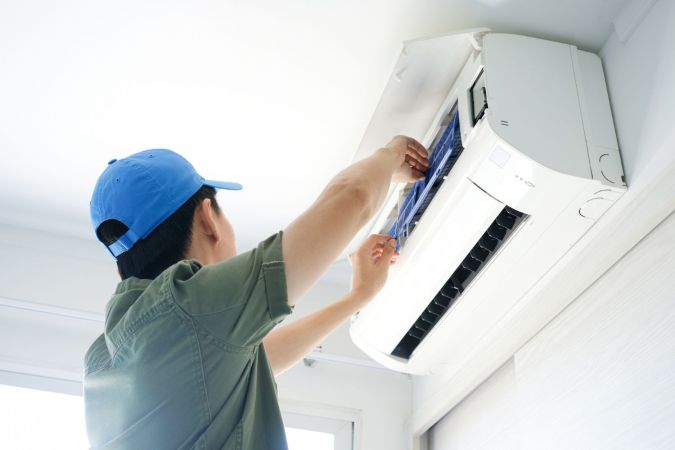We may earn revenue from the products available on this page and participate in affiliate programs. Learn More ›
Q: I’ve just turned on the air conditioner for the summer but have yet to get comfortable. The appliance circulates air, but nothing refreshingly chill. My air conditioner is not cooling at all. How do I fix it?
A: It’s the last thing you want on a sweltering summer’s day: a central air conditioner not blowing cold air. While your first reaction to air conditioner problems may be to contact an HVAC pro, with a little of your own AC troubleshooting, you might be able to remedy the problem and save on a costly house call.
Air conditioning systems operate on a basic scientific process called phase conversion.
- Refrigerant, the liquid used in an AC system, undergoes a continuous cycle of evaporation and condensation within the unit’s sealed coil system.
- The unit’s evaporative coils, which are usually located inside your home near a blower unit, become icy cold as the refrigerant within turns from a liquid to a gas.
- The unit’s fan blows air over those icy coils, which forces cooled air through your home’s ducting.
- The gas then cycles back to a condenser coil unit (located outside), where it cools back down to a liquid and the cycle repeats itself over and over.
There are several possible causes of an AC system that is blowing warm air. The following are a few things to check when your air conditioner is not cooling your space.
Check and reset the thermostat.
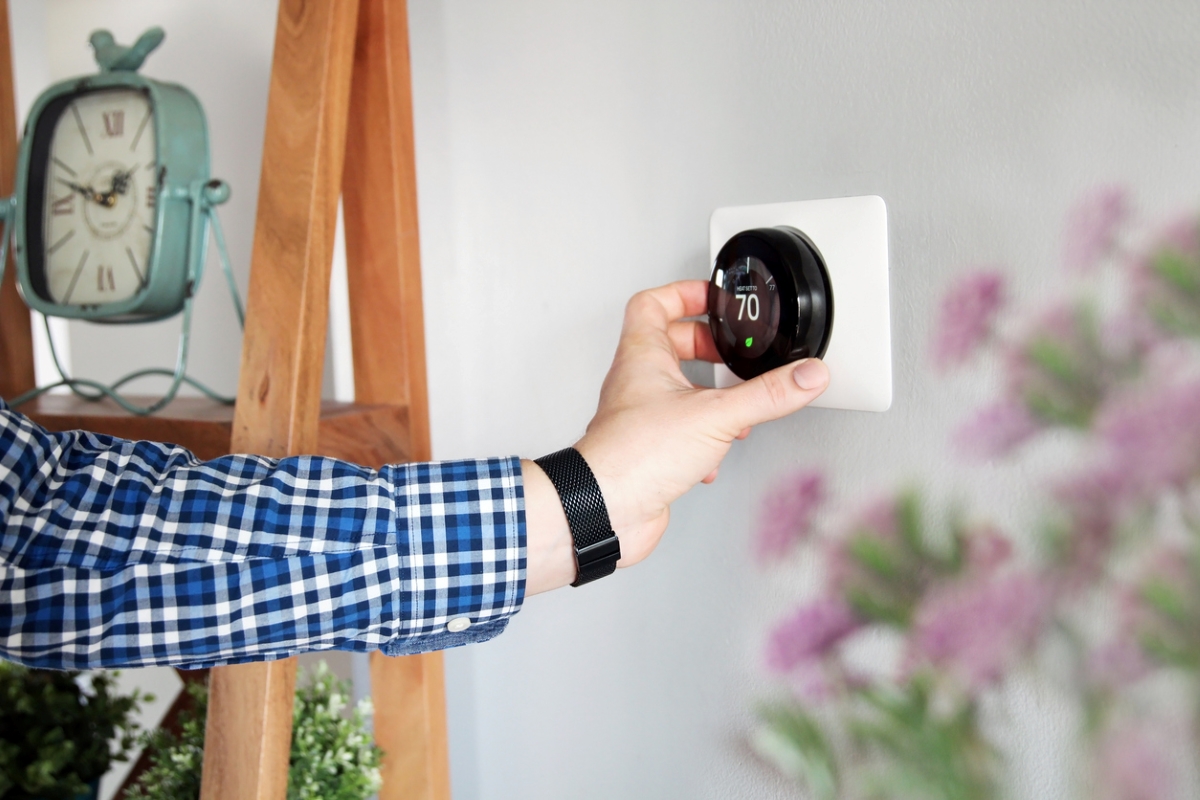
It may seem simple, but sometimes when an air conditioner is running but not cooling, it is merely the result of someone switching a home thermostat from “Automatic” to “Fan.”
When the switch is set to “Automatic,” the thermostat switches on the air conditioning when the indoor temperature rises above the desired preset temperature. If the switch was accidentally set to “Fan,” the unit will blow air through the duct system, but no cooling will take place.
Easy DIY fix: This is the easiest way of fixing an AC system: Check and reset the switch from “Fan” to “Automatic.”
Replace the dirty filter.
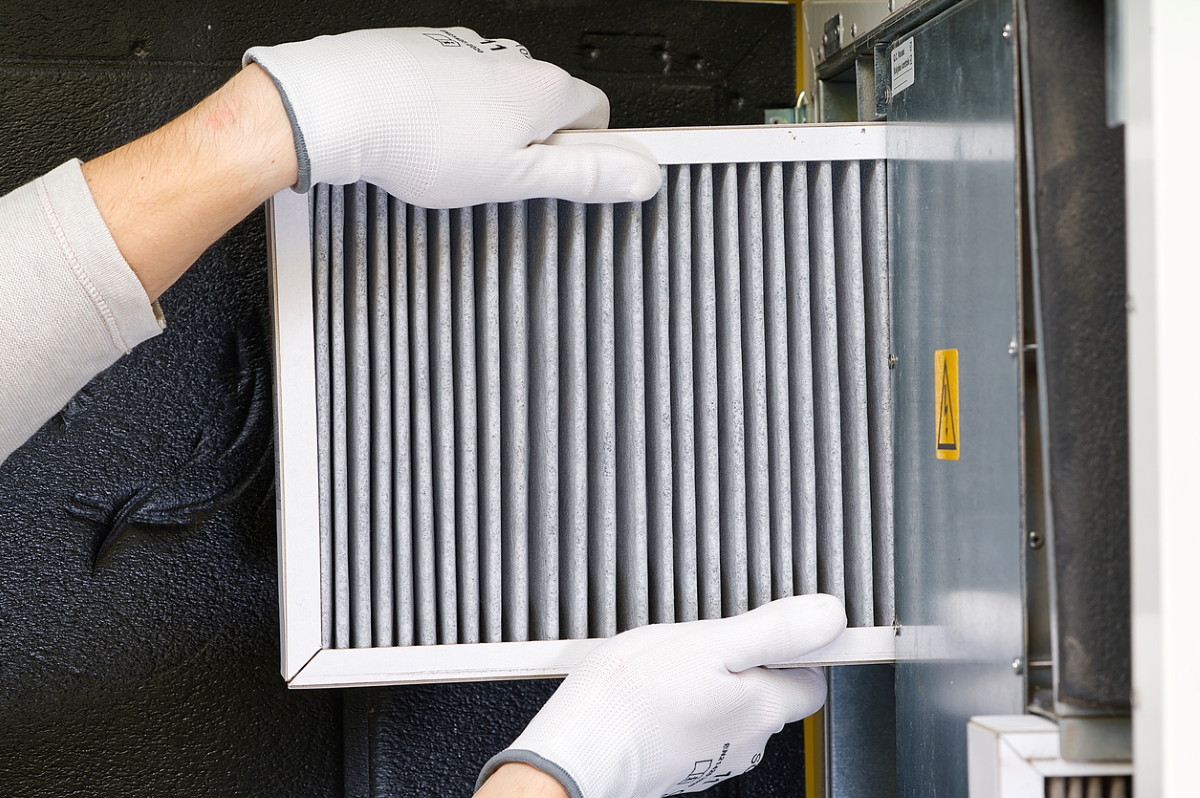
If it’s been more than a couple of months since you’ve replaced the return-air filters in your AC system, they may be clogged and dirty, and may be affecting airflow. When filters get clogged with animal fur and dust, the AC system can’t draw in sufficient air, and as a result, only a wimpy flow of air comes out.
“A dirty or clogged air filter is one of the most common reasons why your air conditioning unit isn’t working at maximum efficiency, since it will restrict proper, clean airflow,” says Syed Shahzer, engineering applications and training manager at Bosch Home Comfort.
Easy DIY fix: Remove and inspect the return-air filter. If you can’t see what’s on the other side, either clean it (if it’s washable) or replace it. Shahzer says, “You should be either cleaning or replacing your air filter at least once every 3 months—or every 2 months if you have indoor pets.”
If you can see through the filter, the problem with your AC not cooling lies elsewhere.
Clear the clogged condensation drain.
Air conditioners work in part by removing humidity from the air (through condensation), and that moisture must go somewhere. The job of a condensation drain hose is to direct that moisture to a floor drain or to the outside of your home, depending on your system. Condensation drains are subject to blockage by mold and algae growth. When this happens, some air conditioners won’t blow cold air, while others will shut down completely.
Easy DIY fix: Locate the end of the condensation drain line (it’s often in a utility room) and visually inspect it for clogs. If you see a clog, carefully clear it out with the end of a small screwdriver or similar narrow item.
If a clog forms higher in the line where you can’t reach it, applying suction to the end of the line will usually remove it. Use the hose on a wet/dry shop vacuum—and hold your hands around the opening—to create sufficient suction between the two hoses.
After removing a mold or algae clog, pour a couple of cups of white vinegar into the condensation pan that lies beneath the evaporator coils in the inside blower unit (learn how to access and identify the coils and the condensation pan below). The vinegar will kill residual mold buildup and reduce the risk of future clogs.
Try to diagnose duct malfunctions.
In a central AC system, the main blower forces cold air through the ducting and from there into individual rooms. If a duct somewhere between the blower and a room register (the grille that covers the opening of an HVAC duct) has broken, the cold air could be blowing out before it reaches the room’s register. If cool air is blowing from some registers but not from others, there’s a good chance the ducting that feeds the registers is at fault.
Easy DIY fix: If you have an unfinished basement, you can examine the ductwork to see if a joint has come loose. If so, refit the ends of the joint and tape the new joint securely with duct tape. If a ducting joint has come loose within a finished wall, however, you won’t be able to easily locate it and it’s best to call an HVAC professional.
Clear the area around the compressor.
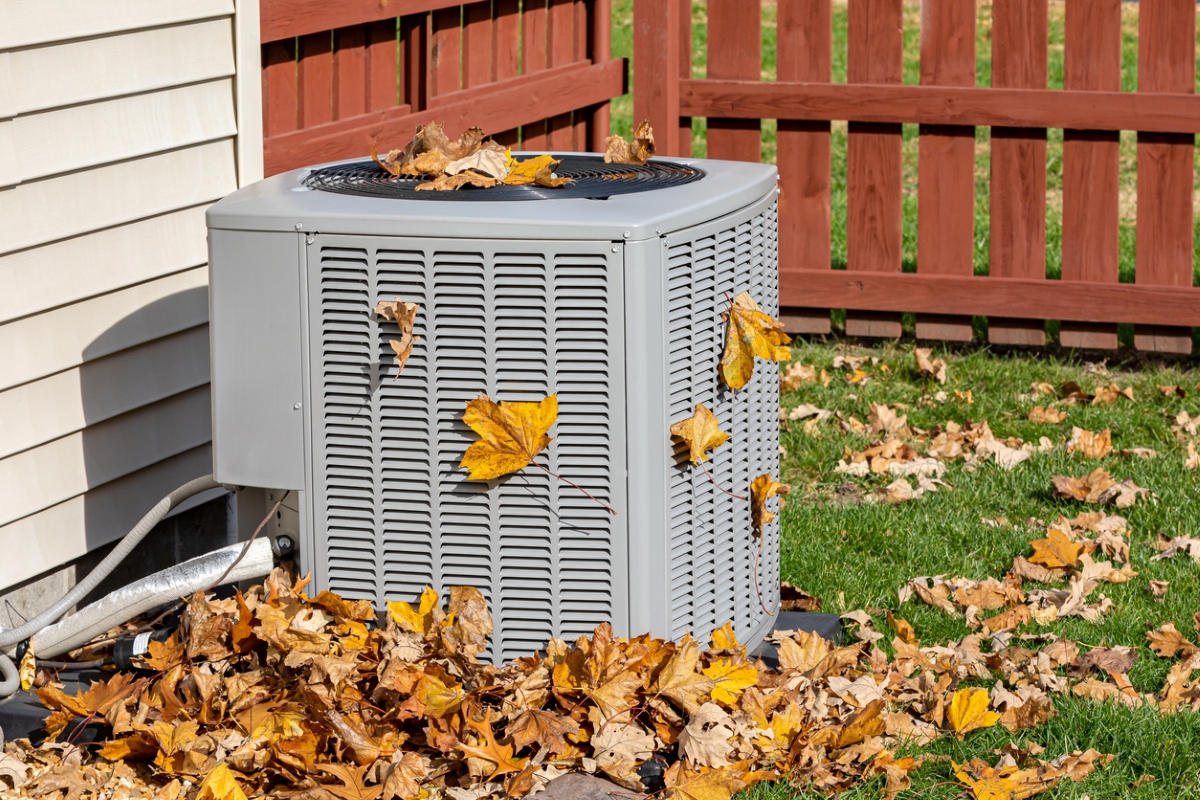
If dry leaves and debris have piled up next to the compressor unit, it may not be able to draw in sufficient air. To find out, locate the compressor unit, which will typically be tucked away on the back or the side of the house, where it won’t draw attention.
Easy DIY fix: Clean away all debris or anything else that might be crowding the unit, such as weeds or overgrown vines. To ensure peak performance of your air conditioner, don’t place anything on top of the compressor.
Clean dirty coils.
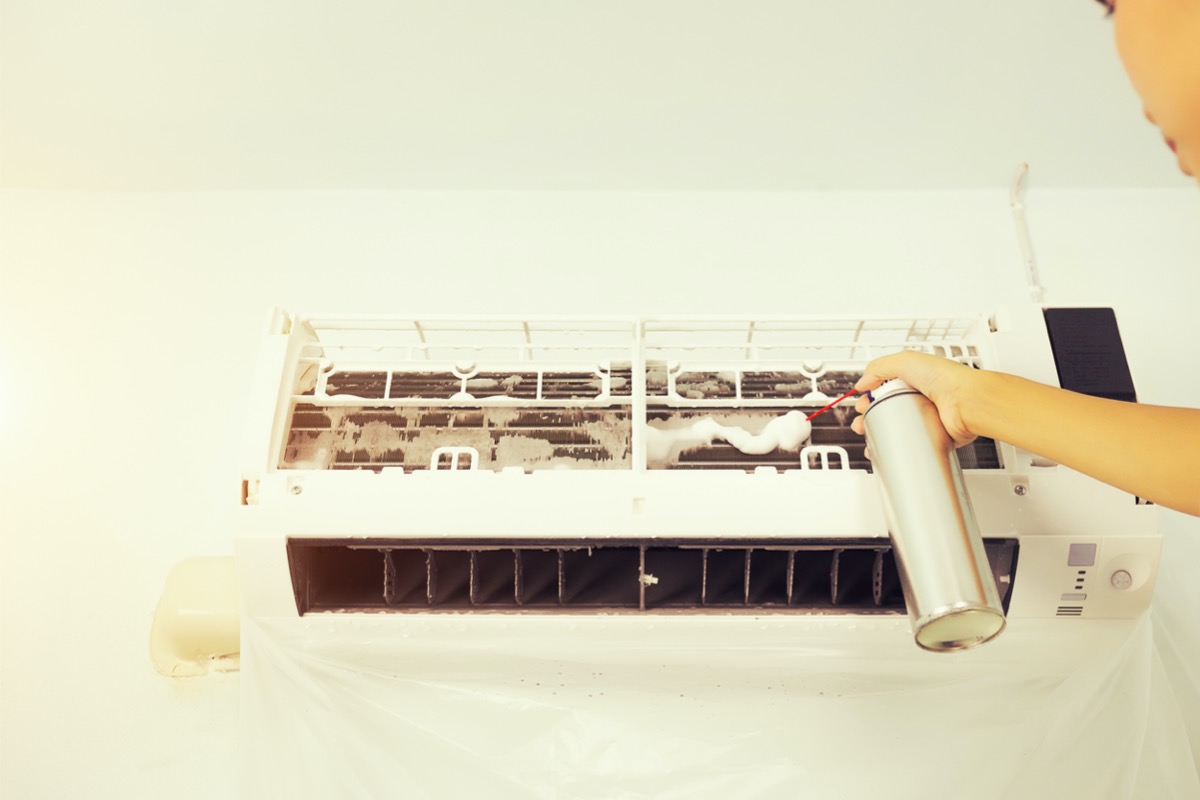
If your air conditioner is working but not cooling, dirty coils may be the culprit. The typical AC system has two sets of coils: condenser coils, which are located in the outside compressor unit, and evaporator coils, which are encased near the indoor blower unit. When either set of coils becomes dirty or covered with mold and debris, cold air output can suffer. Cleaning the AC coils involves removing the metal enclosures that protect them.
Easy DIY fix: If you don’t feel comfortable opening the AC units you can hire a pro to clean them. If you’d like to try cleaning the coils on your own, however, follow these steps:
- Shut off the power to both the exterior and interior units at the breaker panel. Each one will be on a separate breaker.
- Follow the AC manufacturer’s directions for removing the exterior compressor cage or the metal panels that house the evaporator coils.
- To clean interior (evaporator) coils, spray a non-rinse evaporator coil cleaner such as Nu-Calgon Evap Foam No Rinse onto the coils, which resemble U-shaped copper or steel tubes. The non-rinse cleaner foams up on the coils and dissolves dirt and grime before liquefying and running into a condensation pan that empties into the condensation drain hose.
- To clean exterior (condenser) coils, spray the coils and the thin metal fins that surround them with a condenser coil cleaner such as Nu-Calgon’s Nu-Blast Condenser Coil Cleaner. This cleaner is different from evaporator coil cleaner and will require rinsing with a hose. Follow the product directions carefully.
Buy a more powerful air conditioner.
If you’ve recently added on to your living space or purchased a new cooling unit and the AC is not reaching the desired temperature, then the unit may not be sized properly for the space. “If your unit is running long cooling cycles and/or is not able to effectively cool your space when it should, then your unit may be too small,” says Shahzer. “You may also notice a lot of humidity and sticky air.”
A general rule is that 1 ton of cooling (12,000 BTUs) is needed for every 400 square feet of space. But that’s a general rule, and conditions depend on the climate, windows, the number of people in the space, and other lifestyle factors. Jeff Ault, virtual HVAC expert with home service company Frontdoor, explains: “Less than ideal humidity and temperature are factors affecting the AC performance, and if the humidity and temperature never seem to achieve the desired comfort level, the system may not be sized correctly.” He adds, “Note that your HVAC contractor (or a Frontdoor expert) can access software that takes in data and a home’s factors to calculate the proper sizing.”
Fix a blown fuse or tripped circuit breaker.
A blown fuse or tripped circuit breaker is usually a symptom of a larger problem since it’s there to protect the electrical system when the motor fails. If the circuit is tripped and you’ve gone through all of the other fixes above, you may need to contact a professional to investigate the issue.
“A blown fuse or tripped breaker is a symptom of a problem. An HVAC technician would be needed to determine why this situation occurred and how to address it so the home system is functioning properly,” says Ault.
Add refrigerant.
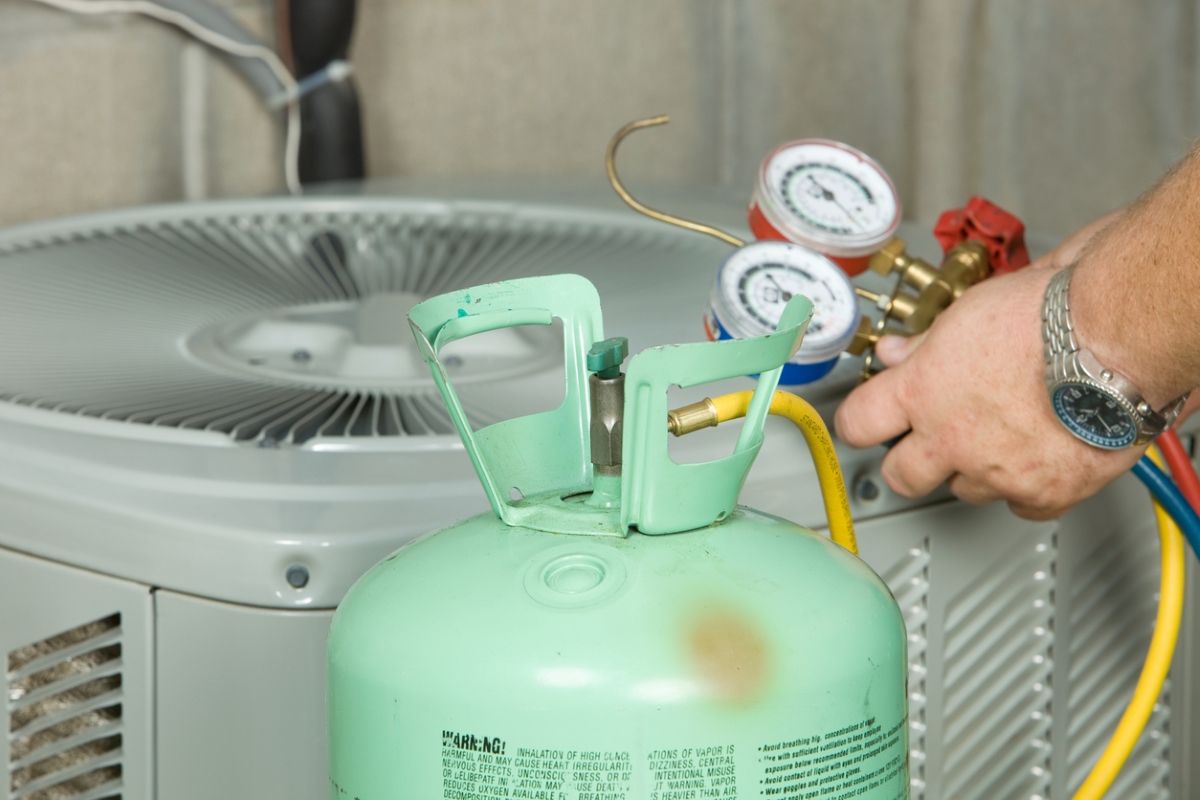
If the air conditioner is not blowing cold air but running and you’ve tried all of the methods above to increase its output, your AC unit may just be low on refrigerant. Unlike the other fixes above, this isn’t a typical DIY job. It requires safety gear, and getting it wrong may mean having to replace the AC unit altogether. It’s also a job that shouldn’t be put off.
“This can also quickly lead to more expensive energy bills since your unit is working overtime to properly cool your home but lacking the basic materials,” Shahzer says. In addition, it can lead to other issues.
“When the system is completely out of refrigerant, modern units will activate an ‘LPS’ (low-pressure switch) that will shut the unit off to protect the compressor. You can tell this is happening when there is air coming out of the vents, but it will not be cold, and the outdoor unit will not be running,” says Ault of Frontdoor.
Know when it’s time to call an HVAC pro.
If you’ve gone through the DIY steps above and your AC system is still not cooling, the problem could be leaking refrigerant or a failed compressor unit. As we’ve said, refrigerants are federally regulated and may only be handled by a licensed HVAC professional—you couldn’t replace them yourself if you wanted to. At this point, it’s time to call a pro.
If the issue is an AC unit not blowing cold air and your AC system is more than 10 years old, you may have a failed compressor and might need to purchase a new system. Again, this is an issue that can only be diagnosed by the pros, so make the call.
Final Thoughts
When an AC unit is not blowing cold air, there are many possible causes that can easily be fixed without the help of a professional. From changing the filter to checking the thermostat settings to cleaning the coils, there is much that you can do to get your air conditioner working again quickly and keep your home cool. “The best thing a homeowner can do is to keep their system clean with regular filter changes, rinsing the coils on outdoor units, and cleaning out the drain line with a shop vac,” says Ault.
However, if you’ve tried all of the air conditioner troubleshooting and DIY fixes and your AC is still not working, it’s time to call a professional for an evaluation. And remember these wise words from Shahzer: “Always keep an eye out for warning signs. Things like weird noises, bad smells, warm air and/or humidity, and lots of condensation are not normal, so don’t ignore them.”
If the pro says it’s time for a new AC, be sure to research his or her recommendations in our guide to the best air conditioner brands.
FAQs
Q. Should I turn off the AC if it’s not cooling?
Turning off the AC is usually helpful and sometimes required to safely investigate some of the possible issues with an AC system not cooling. If the thermostat setting is the issue, it’s not necessary to turn off the AC.
Q. Why is my AC blowing cold air but not cooling the house?
If the air conditioner is blowing cold air but not cooling the house, the home could be leaking air to the outside. Check that all windows and doors are closed. If the air feels cooler than the room temperature but is not as cool as desired, this could just be the fan blowing.
Q. How do I know if my AC compressor is bad?
If the blowing air is warm or if you hear loud noises or vibrations when starting the air conditioner, then the compressor may be going bad.
Q. How do I reset my air conditioner?
Turn off the power to the air conditioner at the breaker panel, press the reset button on the unit for a few seconds, and then turn the unit back on. Check the user’s manual for your particular unit for specific instructions.
Q. How long does it take for an AC unit to reset?
Most experts recommend waiting about 30 minutes after pushing the reset button before turning the unit back on.

